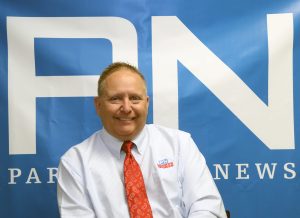Paralyzed Veterans of America celebrates 75 years of service
This year, Paralyzed Veterans of America (PVA) marks the beginning of 75 years of service to veterans with spinal-cord injury or disease (SCI/D) and holds its 75th Annual Convention.
A number of years ago when I was president of PVA’s Minnesota Chapter, I attended United Veterans Legislative Council (UVLC) meetings. Legislative issues affecting veterans were the core topic, and attendees included representatives from Department of Veterans Affairs (VA) hospitals, legislative staff from elected leadership and veterans service organization (VSO) members.
At one of these meetings, a representative from the Veterans of Foreign Wars, which was formed in 1899, asked me when PVA was founded. When I told him that we began our formation in 1946, he looked astonished and asked, “What took so long? People in the military had to have incurred spinal-cord injuries prior to World War II?”
I then explained to him that prior to World War II, the life expectancy of someone who sustained a spinal-cord injury (SCI) was usually measured in weeks, which wasn’t quite enough time to form a national VSO.
The advent of antibiotics was the turning point in this regard, as the most common reason for death was infection. The first veterans to survive this devastating injury were as confused about their future as the doctors providing their care.
Until this time, SCI was known as “an ailment not to be treated.” There was no treatment except to simply keep you as comfortable as possible until your inevitable passing. Once survival became the norm, the doctors and society had to answer the question, “What’s next?”
Historically, anyone with a medical condition this complex, and one that required the use of a wheelchair, meant permanent institutionalization. The world in general, and even the United States, which had the most advanced and modern infrastructure of the time, wasn’t designed with wheelchair access in mind.
In spite of this, these veterans didn’t just say, “No.” They said, “Hell no,” to any suggestion that they couldn’t return to life as they previously knew it. The veterans who incurred SCI during World War II were a huge part of bringing about the necessary changes in both attitude and barrier removal.
Much of that change was accomplished through the efforts of the national organization they were about to form.
Their passion to pursue life from a wheelchair without restrictions was the spark that created PVA. Knowing there was strength in numbers, they began to organize and form associations in the nation’s specific military and VA hospitals designated to provide their care. In California, it was the Birmingham General Hospital and Naval Hospital Corona; Chicago had Vaughan; Memphis had Kennedy; in Virginia, it was McGuire; Massachusetts had Cushing; and in New York City, it was the Bronx, Halloran and St. Albans.
Army veteran John M. Price, who was injured in a diving accident in 1943 shortly after attending the Army’s Officer Candidate School, was a catalyst in the organization’s creation.
Price was sent to the Bronx VA for his rehabilitation in 1944. While there, he collaborated with other paralyzed veterans to form the Bronx Paralyzed Veterans Association and worked with hospital staff on a new vocational rehab endeavor. That project was to train catastrophically injured veterans for future careers in the field of printing.
This was the birth of Paraplegia News (PN), a publication that would also serve the purpose of sharing inspiration and hope with veterans across the country who had SCI. The magazine was also a call to arms in the hope of forming a national organization to serve the needs of those with SCI/D.
Over the next months, we’ll share PVA’s history, as well as its plans for the future, in the pages of PN. If you’re a PVA member, old or young, and have a story to tell about how this organization affected your life, contact us.
Seventy-five years is a long time, and PVA’s accomplishments have been great. We look forward to sharing with you many things about this organization’s history and its plans for the future.




One Response
Love the mention about why only 75 years. As the former Commander of Post 1 which has been in existence since 1899, this really hit home. I’m quoting this in our newletter this month to our chapter.
Best,
Izzy